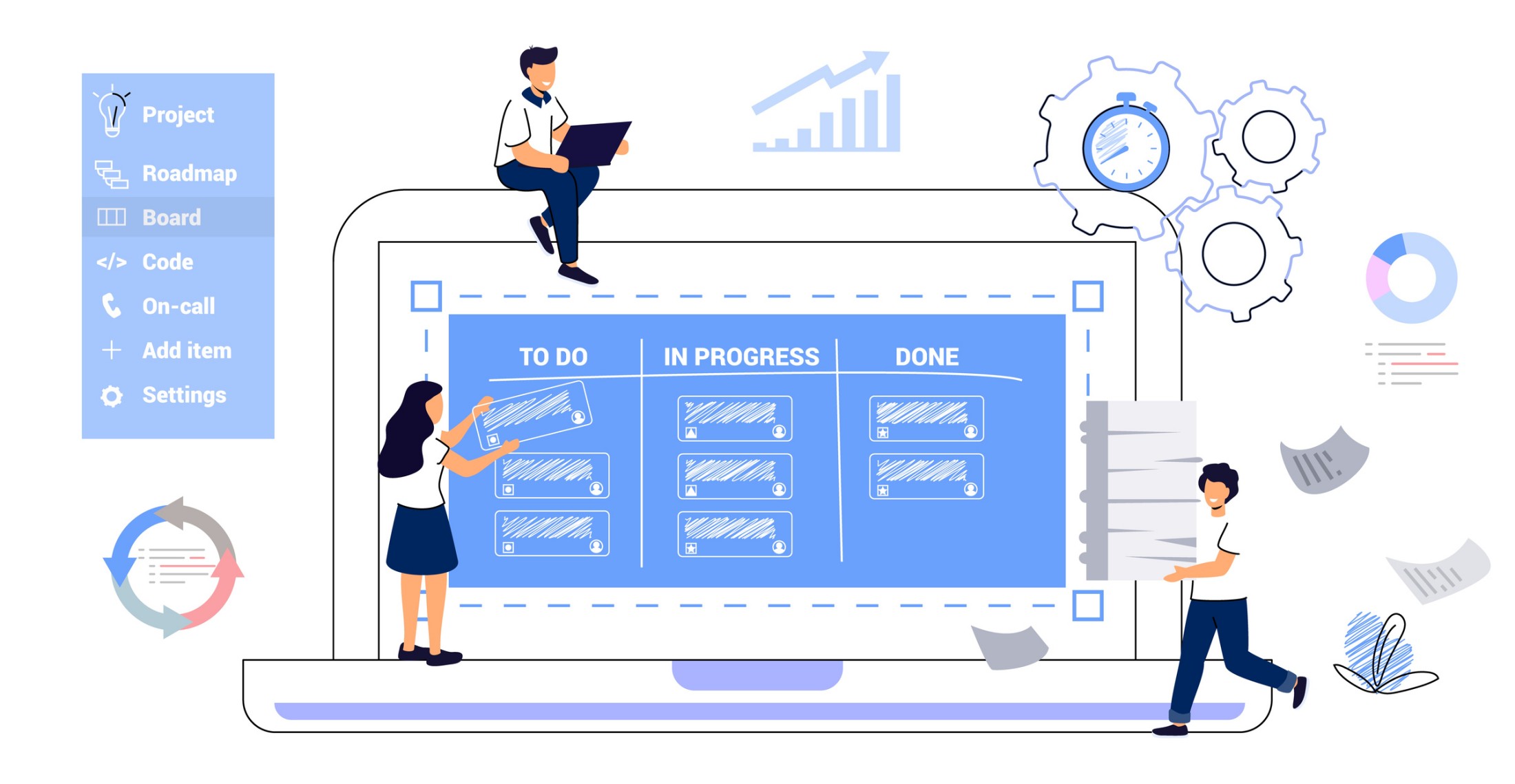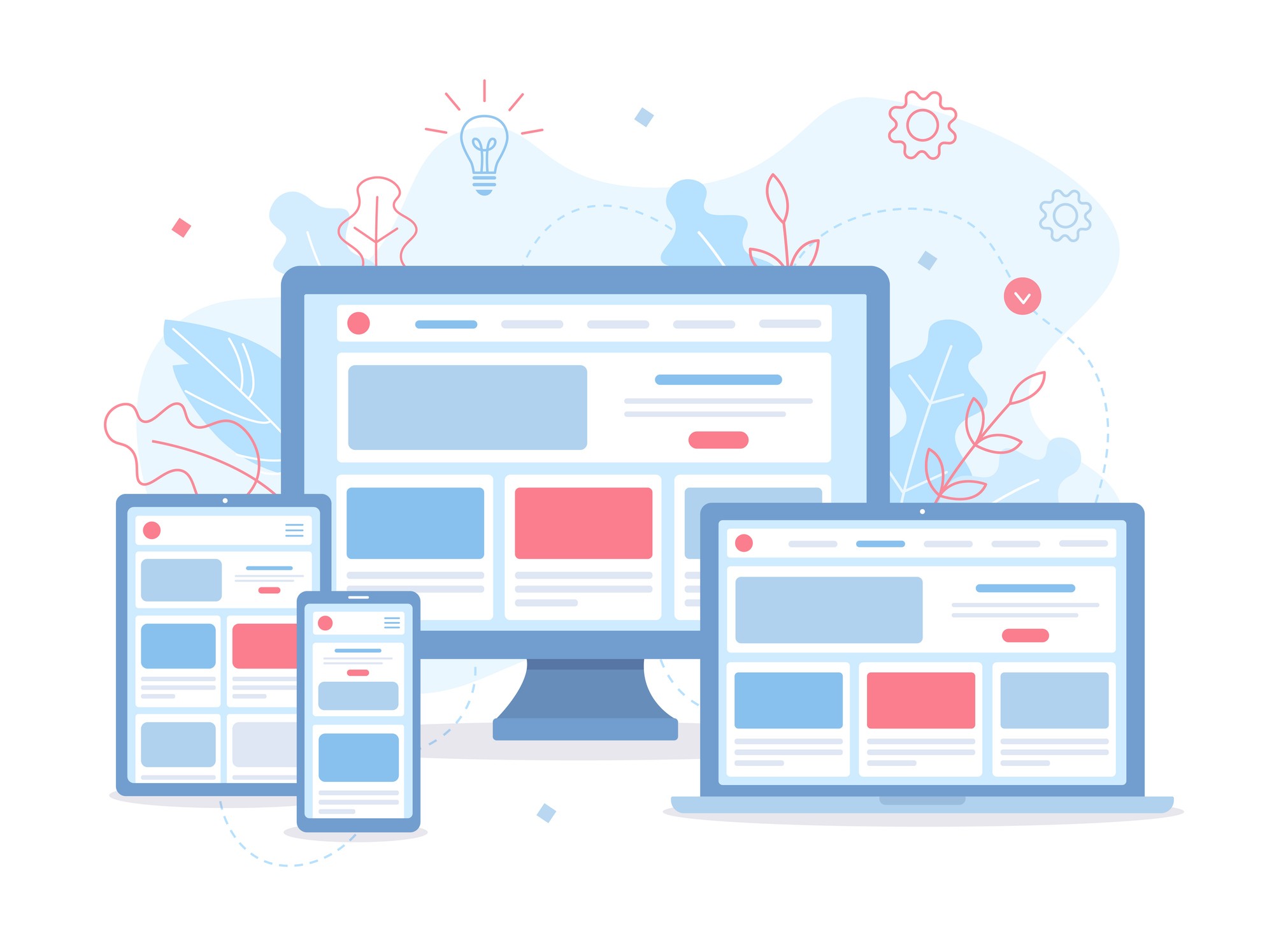In App development, "Use Cases" and "User Stories" stand out as key methodologies to capture essential requirements, each offering unique insights and strategies for defining system functionalities and user interactions.
Use Cases provide a structured framework for detailing the interactions between users and the system, essential for both Agile and Waterfall methodologies. In Waterfall projects, Use Cases offer a comprehensive, step-by-step guide to every aspect of system behaviour, acting as a detailed roadmap through the development lifecycle. Meanwhile, Agile projects benefit from the adaptability of Use Cases, allowing for a flexible, iterative approach that stays responsive to evolving user needs and project goals.
User Stories complement this by offering a succinct, user-centered narrative in Agile environments, highlighting the value and objectives from the user's perspective. This method encourages active collaboration and rapid iteration, ensuring the development process is closely aligned with user expectations and business outcomes.
Together, Use Cases and User Stories enrich the requirements documentation process, providing a robust framework for understanding and achieving project objectives. Their integration into app development workflows ensures a balanced approach to planning and execution, catering to the specific demands of both Agile and Waterfall methodologies. This synergy between detailed planning and user-centric flexibility makes them indispensable tools in the quest to translate complex ideas into successful software applications.
What Are Use Cases?
Use Cases are a systematic approach to capturing and describing the functional requirements of a system from an end-user's perspective. They detail the interactions between users (or "actors") and the system itself to achieve specific goals. By focusing on the requirements needed to fulfill user objectives, Use Cases help in bridging the gap between technical specifications and user expectations, ensuring that the development team comprehensively understands what the system must do.
At their core, Use Cases are narratives that describe how a system behaves as it responds to a request from one of its users. They are intended to capture all possible scenarios, including both standard and exceptional flows, to ensure the system is designed to handle various real-world interactions.
The primary purpose of Use Cases is to facilitate a clear, detailed understanding of system requirements for all stakeholders involved, from developers to clients, thereby reducing ambiguities and ensuring a shared vision for the project outcome.
Use Cases in Waterfall Methodology
Within the structured phases of the Waterfall methodology, Use Cases play a critical role during the requirements and design stages. They provide a detailed blueprint for the system's functionality, offering a sequential, step-by-step guide to every feature and user interaction.
This comprehensive documentation becomes a reference point throughout the development process, guiding the creation of system architecture, design, implementation, and testing phases.
By laying out the interactions and expected outcomes in detail, Use Cases help in mitigating risks and ensuring that the final product aligns closely with the user's needs and project objectives.
Use Cases in Agile Methodology
While traditionally associated with the structured, sequential nature of Waterfall methodology, Use Cases also find a valuable place within the flexible, iterative cycles of Agile development. They provide detailed scenarios of user-system interaction, aiding Agile teams in understanding the comprehensive functionality of the software.
This depth of insight enables effective feature prioritization, sprint planning, and test design, ensuring each development cycle incrementally advances the project toward its overarching goals.
By facilitating clear communication, Use Cases help unify developers, product owners, and stakeholders around a shared vision, enhancing collaboration and fostering a highly adaptive development process.
Key Components of a Use Case
A Use Case typically consists of several key components that together provide a clear and detailed picture of the system's functionality:
- Actors: These are the entities (users or external systems) that interact with the system. Actors initiate the use case scenarios to achieve a goal.
- Scenarios: Also known as use case instances, scenarios describe specific interactions between the actors and the system, leading to the accomplishment of the goal.
- Preconditions: Preconditions must be met before the start of a use case. They describe the state of the system or conditions that exist to make the scenario possible.
- Postconditions: The state of the system after the completion of the use case. Postconditions indicate what has been achieved or changed.
- Main Flow (or Success Scenario): This is the standard sequence of steps that the system and the actor take to complete the use case successfully.
- Alternative Flows: These capture variations in the interaction, covering different paths that might be taken in response to different conditions or decisions.
- Exception Flows: Exception flows detail what the system does when something goes wrong, describing how exceptions are handled.
Together, these components create a comprehensive framework for understanding and documenting the required functionality of a system, making Use Cases an essential tool in the development process, particularly within the Waterfall methodology.
What Are User Stories?
User Stories are a fundamental component of Agile project methodologies, serving as a simple, yet powerful tool for capturing the essence of a user's needs. They are short, descriptive statements that convey the requirements of a system from the perspective of the user.
By focusing on the value a feature brings to the user, User Stories help ensure that the development team prioritizes user satisfaction and business value.
A User Story is a concise, informal narrative that describes a feature from the viewpoint of the end-user or customer. It outlines what the user wants to achieve by using the system, emphasizing the need rather than the solution.
This emphasis on user-centric outcomes makes User Stories a key element in Agile methodologies, where flexibility, responsiveness to change, and incremental delivery are prized. User Stories facilitate communication between stakeholders and developers, ensuring everyone has a shared understanding of the objectives the software needs to meet.
The Structure of a User Story
User Stories typically follow a simple template to ensure clarity and focus on the user's needs:
- "As a [user], I want [need] so that [benefit]."
This structure keeps the User Story centered on three critical elements:
- As a [user]: Identifies the role of the person or system that will benefit from the feature.
- I want [need]: Describes what the user wants the system to do, focusing on a specific function or goal.
- So that [benefit]: Explains the value or outcome the user seeks, providing context and justification for the requirement.
Benefits of User Stories for Agile Development
User Stories offer several advantages for Agile teams, including:
- Enhanced Communication: They facilitate better understanding and discussion among team members and with stakeholders, as the narratives are accessible and non-technical.
- Flexibility: User Stories can easily be adjusted, reprioritized, or rewritten as project needs evolve, supporting Agile's adaptive nature.
- Focus on User Value: By highlighting the benefit to the user, they ensure the development process is aligned with delivering value to end-users.
- Incremental Development: User Stories can be developed in short cycles, allowing teams to build, test, and receive feedback quickly, leading to better final products.
- Facilitates Prioritization: The clear, concise format helps stakeholders and teams prioritize features based on the value they deliver to users.
Benefits of User Stories for Waterfall Development
Use Cases bring significant benefits to teams utilizing the Waterfall development methodology, streamlining the process from conception to completion.
- Clear Communication: They offer a structured framework for detailing system interactions, enhancing understanding and facilitating discussions between technical and non-technical stakeholders.
- Comprehensive Planning: The in-depth nature of Use Cases supports the thorough upfront planning required by Waterfall, allowing for a clear project roadmap and reduced risk of oversight.
- Alignment with Project Objectives: By detailing the expected interactions and outcomes, Use Cases ensure that the development efforts are closely aligned with the project's goals and user expectations.
- Sequential Development Support: Their structured format integrates well with Waterfall's phased approach, guiding each stage of development from design through to testing and implementation.
- Prioritization of System Requirements: Use Cases help in identifying and prioritizing system functionalities, ensuring that essential features are developed and tested first for effective scope and resource management.
Use Cases and User Stories Comparison
The approaches to capturing requirements in software development significantly influence the project's direction, efficiency, and success. Use Cases and User Stories represent two methodologies for requirements gathering, each with its unique focus and application.
Understanding their differences and applications can help in selecting the most appropriate method for a project.
Approach to Requirements Gathering
-
Use Cases:
- Focus on the interaction between the system and the user, detailing every possible scenario.
- Aim to capture all functional requirements through detailed descriptions of system behavior and user interaction.
- Emphasize a comprehensive understanding of the system's functionality and the user's needs.
-
User Stories:
- Concentrate on the end result or value for the user, with less emphasis on how the system will achieve it.
- Encourage collaboration and conversation, gathering requirements in a more iterative and incremental manner.
- Are written from the perspective of the user, making them more focused on user needs and less on system details.
Level of Detail
-
Use Cases:
- Provide a detailed, step-by-step description of the system's functionality and how users interact with it.
- Include scenarios covering normal, alternative, and exceptional flows.
- Are more structured and detailed, often accompanied by diagrams and models.
-
User Stories:
- Are intentionally brief, leaving room for discussion and interpretation.
- Focus on what the user wants to achieve, without detailing the specific implementation.
- Typically, require further breakdown into tasks or acceptance criteria for development.
Suitability for Project Methodologies
-
Agile:
- User Stories are inherently suited to Agile methodologies due to their flexibility, brevity, and focus on user value.
- Facilitate quick iterations and accommodate changes easily, aligning with Agile's adaptive nature.
-
Waterfall:
- Use Cases align well with the Waterfall methodology, as they provide the detailed documentation and upfront planning required.
- Their comprehensive and structured format supports the sequential phases of the Waterfall approach, from requirements gathering to testing.
Use Cases and User Stories each have their strengths and ideal applications within software development projects.
Use Cases offer detailed blueprints for system behavior and are well-suited to the Waterfall methodology's linear, thorough planning process.
User Stories, on the other hand, provide a flexible, user-centered approach to requirements gathering, making them ideal for the iterative, adaptive processes of Agile methodologies.
Understanding the distinctions between these two methods enables teams to effectively match their requirements documentation approach to their project management style, ensuring both clarity and flexibility in achieving project goals.
User Stories vs Use Cases Comparison Table
| If your project needs… | Choose User Stories | Choose Use Cases |
|---|---|---|
| Fast iteration and changing requirements | x | |
| A lightweight, agile-friendly format | x | |
| Strong focus on user goals and value | x | ± |
| Detailed step-by-step system behavior | x | |
| Clear edge cases and alternate flows | x | |
| Complex business rules or workflows | ± | x |
| Cross-team or stakeholder clarity | ± | x |
| Long-term documentation and maintenance | x | |
| Small to medium-sized projects | x | ± |
| Large, complex, or regulated projects | x |
± = could go either way
Tip: Many real-world projects use both. User stories help guide agile development, while use cases provide the detailed clarity needed for complex workflows and edge cases.
Selecting the Right Requirements Format
Both Use Cases and User Stories offer valuable methodologies for capturing system requirements, but their effectiveness can be best understood through practical application in real-world scenarios. Each method has distinct advantages, depending on the project management approach and the specific needs of the project.
Use Cases in Waterfall Projects
Use Cases are particularly beneficial in Waterfall projects due to their detailed and systematic nature. They serve as a comprehensive roadmap for system functionality, offering several key advantages:
- Detailed Planning: Use Cases allow for extensive upfront planning, detailing every aspect of system interaction and user behavior. This aligns well with the sequential stages of the Waterfall methodology, where each phase depends on the deliverables of the previous one.
- Risk Mitigation: The thoroughness of Use Cases helps identify potential problems and ambiguities early in the development process, reducing risks associated with project complexities.
- Stakeholder Communication: Use Cases provide a clear and detailed description of system functionality, facilitating better understanding and agreement among all project stakeholders.
User Stories in Agile Environments
In contrast, User Stories excel in Agile environments, where flexibility and adaptability are paramount:
- Rapid Iterations: The concise nature of User Stories supports quick iterations, allowing teams to adapt to changes in requirements or priorities seamlessly.
- Enhanced Collaboration: User Stories encourage ongoing dialogue between developers and stakeholders, ensuring that the final product aligns closely with user needs and expectations.
- User-Centric Development: By focusing on the end value to the user, User Stories ensure that the development process remains aligned with delivering tangible benefits to end-users.
Best Use Cases for Each Approach
- Use Cases in Complex Systems
For projects involving complex systems with intricate workflows or regulatory requirements, Use Cases shine by providing the detailed documentation necessary for understanding and implementing such complexities. - User Stories in Consumer-Focused Applications
When developing consumer-facing applications, User Stories are invaluable. They allow teams to quickly respond to user feedback and market trends, ensuring the product remains relevant and user-friendly. - Use Cases in Large-Scale Integrations
In scenarios involving large-scale integrations between systems, Use Cases help in detailing the precise interactions and data flows required, ensuring all systems communicate correctly. - User Stories in Startups and MVPs
Startups and projects focused on building a Minimum Viable Product (MVP) benefit from User Stories. This approach allows for rapid development cycles, enabling teams to test ideas in the market and iterate based on feedback.
Understanding when and how to apply Use Cases and User Stories can significantly impact a project's success. By choosing the method that best fits the project's needs and management style, teams can ensure effective communication, reduce risks, and create products that meet or exceed user expectations.
Tips for Better Requirements Documentation
Adhering to best practices and avoiding common pitfalls, teams can ensure their documentation accurately reflects user needs and system functionalities, paving the way for successful project outcomes.
Tips for Writing Impactful Use Cases
- Be Specific and Concise: Clearly define the actions and interactions between the user and the system without being overly verbose. Specificity helps avoid ambiguity, while conciseness keeps the documentation accessible.
- Incorporate Visuals: Use diagrams or flowcharts to complement the textual descriptions of Use Cases. Visual aids can help stakeholders and team members better understand the flow of interactions.
- Define Preconditions and Postconditions: Clearly state the conditions before and after a use case is executed. This clarity helps in understanding the system's state and ensuring all scenarios are covered.
- Cover All Scenarios: Include main, alternative, and exception flows to comprehensively capture all possible user interactions with the system. This thoroughness ensures the system is prepared to handle various situations.
Tips for Writing Impactful User Stories
- Focus on User Value: Each User Story should clearly articulate the value it brings to the user. This focus ensures that the development effort is always aligned with enhancing user satisfaction.
- Keep It Simple: Write User Stories in everyday language to ensure they are easily understood by all stakeholders. Avoid technical jargon unless absolutely necessary.
- Use the INVEST Principle: Ensure User Stories are Independent, Negotiable, Valuable, Estimable, Small, and Testable. This principle guides the creation of well-defined and manageable tasks.
- Encourage Collaboration: Use User Stories as a basis for discussions among team members and stakeholders. Collaboration fosters a deeper understanding and refinement of requirements.
Pitfalls to Avoid in Requirements Documentation
- Overlooking User Feedback: Failing to incorporate feedback from actual users can lead to a disconnect between the project outcomes and user expectations.
- Too Much Technical Detail: While details are necessary, excessive technicality in Use Cases or User Stories can obscure the focus on user needs and project goals.
- Insufficient Detail: Conversely, too little detail can lead to ambiguity and misunderstandings, potentially causing costly reworks and delays.
- Ignoring Non-functional Requirements: Non-functional requirements such as performance, security, and usability are critical to the system's success and should be included in the documentation.
- Static Documentation: Treating requirements documentation as a one-time task rather than a living document that evolves with the project can hinder adaptability and responsiveness to change.
By avoiding common pitfalls, teams can create effective requirements documentation that serves as a solid foundation for successful software development. Whether employing Use Cases in a Waterfall environment or User Stories in an Agile framework, the focus should always be on clarity, user value, and adaptability.
Download Software Design Document Template
Choosing the Right Documentation Strategy
The initial step of selecting the appropriate requirements documentation method—Use Cases or User Stories—sets the tone for the project's direction, efficiency, and ultimate success. This choice is not merely procedural but foundational, influencing how a project unfolds from conception to completion.
Choosing the Right Method
The decision between Use Cases and User Stories should be guided by the project's specific needs, the chosen development methodology, and the desired outcomes.
Use Cases, with their detailed and structured approach, are ideally suited for projects where clarity of system interactions and comprehensive documentation are paramount, typically within Waterfall frameworks.
On the other hand, User Stories offer a dynamic and user-focused lens, perfect for Agile environments where flexibility, rapid iteration, and adapting to evolving user feedback are key.
Adapt the Methodology Based on Project Needs
Embracing the fluidity of project requirements and being willing to adapt your methodology are crucial for modern software development practices. The landscape of technology and user expectations is ever-changing, necessitating a responsive and flexible approach to project planning and execution.
Encourage your team to remain open to adjustments in your documentation strategy as your project evolves, ensuring that your methods always align with your project's current needs and goals.
The strategic selection and application of Use Cases or User Stories can significantly influence the success of your software development project. By carefully considering your project's unique requirements and being adaptable in your approach, you can navigate the complexities of development with clarity and purpose.




